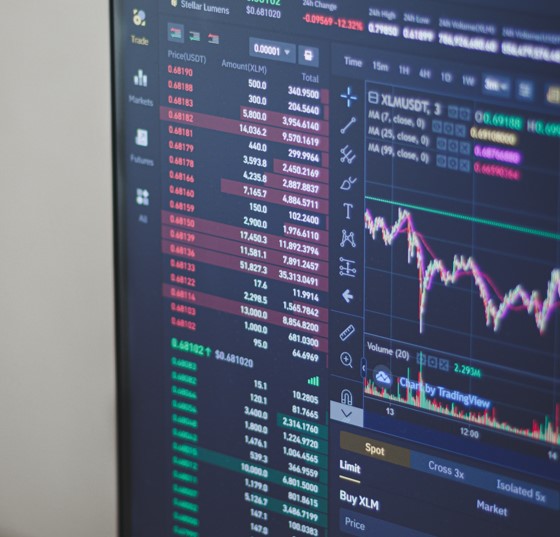Market volatility is an inherent characteristic of every financial market. It refers to the rate and magnitude at which the price of an asset, or the value of a market, fluctuates over a certain period. Both individual securities and the overall market can display this volatility.
It’s quite normal to worry about the success of your portfolio during these uncertain times. Many investors are likewise unclear about how to modify their investment approach during these times.
Therefore, To effectively prepare oneself for these uncertain times, it is crucial to understand what causes market volatility and how it is measured.
Table of Contents
What are the causes of market volatility?
Market volatility is primarily a result of the interplay between supply and demand in the financial markets, which is influenced by a myriad of underlying factors. Key drivers include economic data, such as GDP growth, employment figures, and inflation rates. Which can shape investors’ perceptions of the economic landscape.
Central bank decisions, especially those related to interest rates and monetary policy, further sway market sentiment. Geopolitical events, like wars, trade disputes, and diplomatic tensions, inject uncertainty, which markets typically dislike, leading to fluctuations.
Additionally, market psychology plays a pivotal role in shaping volatility. Collective behaviors, including panic selling, fear of missing out (FOMO), and herd mentality, can amplify price swings, often deviating from fundamental economic indicators. Innovations in trading, like high-frequency algorithm-driven trades, can exacerbate these swings. Furthermore, corporate news, earnings reports, and speculations can result in rapid price adjustments.
How is market volatility measured?
One of the most common metrics for assessing market volatility is the Volatility Index (VIX), often termed the “fear index.” The VIX measures the market’s expectation of 30-day forward-looking volatility, derived from the S&P 500 index options’ price inputs.
When investors anticipate larger price swings in either direction, the VIX tends to rise, indicating heightened uncertainty or fear in the market.
Another method to measure volatility is through historical or realized volatility, which assesses past price fluctuations of an asset. By calculating the standard deviation of returns over a specific period, one can get a sense of the asset’s volatility.
If the standard deviation is high, the returns have deviated more from the average return, indicating higher volatility. Conversely, a low standard deviation suggests stable returns and less volatility.
Market volatility index
The VIX, formerly known as the Chicago Board Options Exchange (CBOE) Volatility Index, gauges the level of volatility that professional investors anticipate the S&P 500 index to experience over the ensuing 30 days.
Due to the VIX’s tracking of the options market, where traders speculate on the future performance of various assets and market indices like the S&P 500, this is known as “implied volatility” among financial professionals.
A rising VIX indicates an increase in uncertainty or fear among investors, suggesting a higher expectation for stock price fluctuations in the near term. Conversely, a declining VIX suggests a more stable or confident market environment. The VIX serves as a barometer for overall market risk, investor sentiment, and market temperature.
Historical volatility vs. implied volatility
Volatility is usually in two forms, it’s either historical (past) or implied(future).
Historical volatility, also known as realized volatility, is measured by evaluating the past price fluctuations of an asset. Typically, it’s calculated using the standard deviation of the asset’s daily returns over a specific period, like 30, 60, or 250 trading days.
Finding a stock’s standard deviation will allow you to estimate how much it is likely to deviate from the mean. Additionally, you will be able to calculate the likelihood of that value change. The higher the standard deviation, the greater the price fluctuation experienced in the specified period.
Implied volatility, on the other hand, is not directly observed from historical data. But is inferred from the prices of options related to an asset. To measure implied volatility, one would typically use option pricing models, such as the Black-Scholes model.
The resultant figure represents the market’s prediction of how volatile the underlying asset will be over the life of the option. Higher option prices, holding other factors constant, often suggest higher implied volatility.
How to invest during market volatility
Long-term investors will most definitely encounter multiple periods of market turbulence. Therefore, during periods of market volatility, investors need to maintain a long-term perspective and avoid making impulsive decisions based on short-term price movements.
Generally speaking, if you invest in stocks, you may anticipate volatility of about 15% of your average return for the year. The market will probably experience a decline from its typical level of up to 30% every five years.
The majority of investors even concur that it’s critical to prevent panic selling during times of increased volatility.
Additionally, staying informed, reviewing investment goals, and possibly consulting with financial advisors can help investors navigate the challenges posed by market volatility and make informed decisions aligned with their financial objectives.
Understanding the roots of volatility is key
Market volatility is shaped by a complex web of factors. Thus ranging from tangible economic indicators to the more intangible, such as human emotions and psychology. For investors, understanding the roots of volatility is key to navigating tumultuous market waters and making informed decisions.
While volatility might induce short-term anxiety, it is a natural component of markets and, with the right perspective, can be approached with strategy and discernment.
Read also: The most volatile currencies recently












